#estimating software tools
Explore tagged Tumblr posts
Text
Transforming Project Management with Painting Estimating Software

I recall the mayhem of my first major painting job. Too many calls, scribbled notes, and a completely out-of-whack cost estimate. It was stressful, time-consuming, and expensive. That all changed when I began using painting estimating software. From the very first week, I knew how much easier everything went—costs were in order, estimates were crisp, and clients stopped questioning everything.
In a 2023 report, Statista found that 42% of contractors attribute project delays to incorrect estimates. That's a lot. And it's one of the reasons I think painting estimating software is a game-changer for anyone running jobs—big or small.
Accuracy That Actually Works
The program doesn't merely generate arbitrary numbers. You input wall measurements, types of paint, and surface factors. It then works out the entire calculation—from material needs to man-hours. Such specificity avoids overbuying or running short.
I once saved more than ₹25,000 on a commercial office respray. How? The estimate broke down coverage by the gallon in exact details and included two coats. I never would have known to do that by hand.
Smarter Workflows, Less Errors
One of the biggest problems with any paint job is getting the entire crew on the same page. Painting software for estimating simplifies all that. You can revise quotes, book jobs, and issue invoices—all in one dashboard.
I've had instances where customers changed their minds midway through a project. Rather than redoing everything by hand, the software allowed me to modify numbers in real time. That took hours off and kept the crew going.
Establishing Trust Through Transparency
Customers like things clear. One homeowner said to me, "I loved knowing exactly what I was paying for." That stuck. With the software, I was able to break it down line by line. No surprise fees. No ballpark estimates.
That creates confidence. And in this market, that is more critical than ever. To the point that, 67% of customers report they'd pay more for transparent, predictable prices (Forbes, 2023).
Stay Ahead of the Competition
I've had leads arrive simply because I used technology. One property manager informed me, "I only hire painters that use professional equipment. It tells me that they approach the job seriously." That made an impression on me as well.
Employing paint estimating software isn't merely efficient—it's impressive. It conveys professionalism, reliability, and being prepared.
Real Results from Real Projects
I have a friend who utilized estimating software on a 20,000 sq. ft. warehouse project. He completed a week ahead of schedule and under budget. He attributes the software to avoiding waste and delays.
Another contractor colleague does school repainting projects. The software allows him to simply revise costs based on changing product prices—something he had difficulty doing in the past.
The Future is Mobile and Predictive
Looking to the future, the software is just getting smarter. Apps these days often have AI-powered recommendations, which assist you in scheduling around the weather or supply chain delay. Mobile access is a big plus too. You can even update a quote while on-site.
Final Thoughts
Using painting estimating software isn’t just about convenience. It’s about control. About knowing your numbers. About gaining the trust of clients who expect accuracy and clarity. If you haven’t tried it yet, now’s the time. It’s made my life easier—and my business stronger.
1 note
·
View note
Text
Precision in Print: How Estimation Software Enhances Cost Accuracy and Boosts Profitability
In the ever-evolving world of commercial printing, getting your numbers right is crucial. With increasing customer demand for customization, quicker turnarounds, and competitive pricing, traditional quoting methods are quickly becoming outdated. Enter print estimation software a game changer in achieving accurate print job costing and maintaining profitability in a competitive marketplace.
Let’s explore how leveraging a print estimating tool can help streamline operations, enhance pricing precision, and align business with the latest printing industry trends.
Why Print Job Estimation Needs a Digital Upgrade
Estimating print jobs manually—-factoring in materials, labor, press time, setup costs, and finishing—-is not only time-consuming but prone to error. A small miscalculation can lead to underpricing, reduced profit margins, or overpricing that drives customers away.
With the help of modern print estimation software, printers can eliminate guesswork. These tools automatically consider all variables involved in a print job—-sheet size, ink usage, labor, machine time—-and generate accurate, consistent quotes in minutes.
Enhanced Accuracy with Automated Calculations
One of the primary advantages of using a print estimating tool is the ability to generate precise job quotes based on real-time data. The software uses pre-defined cost libraries and machine capabilities to deliver accurate pricing for any print specification.
This means you can confidently quote jobs without fear of underestimating costs or overlooking hidden expenses—- improving both client satisfaction and your bottom line.
Streamlining Your Print Management Process
Integrating estimation tools into a full print MIS ERP solution helps in streamlining your print management process end-to-end. From quoting and job scheduling to inventory control and invoicing, everything is synced in a single ecosystem.
This integration ensures that your estimation aligns with actual production capabilities and current material availability, reducing job delays and improving workflow efficiency.
Faster Turnaround and Customer Response Time
Speed is a differentiator in today’s market. With print estimation software, your sales or customers service team can generate accurate quotes in real time—-reducing delays and increasing the chances of securing the job.
This fast response builds trust and positions your shop as a reliable partner—-especially when serving B2B clients who expect timely and competitive proposals.
Adaptability to Printing Industry Trends
Modern ERP for the printing and packaging industry is built with flexibility in mind. As printing industry trends shift owner shorter runs, eco-friendly materials, and hybrid printing, estimation tools can quickly adapt to reflect new costing models or service offerings.
Whether you’re expanding into digital printing, custom packaging, or large-format signage, an intelligent estimating tool can be configured to support new product lines and workflows.
Smarter Profitability Analysis
Beyond just quoting, the data collected through your print estimating tool helps you analyze job profitability over time. You can identify which types of projects bring the most revenue, where hidden costs are eroding profits, and how to optimize production for better margins.
Ths kind of actionable insight of especially powerful when integrated into a print MIS ERP solutions, giving you a 360-degree view of your business performance.
Scalability and Competitve Advantage
As your business grows, managing complex quotes and multiple job types manually becomes unsustainable. Estimation software enables scalability by standardizing pricing, centralizing data, and reducing reliance on key personnel.
It also provides a competitive edge—-ensuring that your quotes are not only fast but also reflect true production costs, enabling strategic pricing decisions.
Conclusion
In a dynamic and competitive market, precision is everything. Investing in print estimation software and integrating it with a broader ERP for the printing and packaging industry is no longer optional–it’s essential. These tools don’t just automate pricing, they streamline print management, improve profitability, and align your business with emerging printing industry trend. Whether you’re a small print shop or an enterprise-level provider, a modern print estimating tool will help you quote smarter, faster, and more profitability.
#printing industry#packaging industry#print estimation tool#print estimation software#erp for printing#erp for packaging
1 note
·
View note
Text
Discover how construction project management software optimizes project planning, scheduling, and execution. This powerful tool improves collaboration, ensures timely completion, and reduces costs, providing construction professionals with the resources needed for successful project delivery.
#construction project management software#construction estimating software#construction estimating tool#construction BIM software#construction scheduling software#ai construction scheduling#ai construction estimating
0 notes
Text
What Is Escrow, and Why Should a Small Business Owner Know About It?

In the dynamic landscape of real estate transactions, efficiency and security are paramount. At the core of this intricate process lies the concept of escrow, a mechanism crucial for the safekeeping of monetary items. Real Estate Closing Software has emerged as a game-changer in this domain, redefining how transactions unfold. As we delve into the nuances of escrow, it's imperative to grasp the pivotal role of a neutral escrow agent in seamlessly facilitating transactions within this innovative software framework.
What is Escrow?
Definition of escrow and the involvement of two parties: issuer and receiver.
Description of assets held in escrow, including money, property deeds, securities, and bonds.
Emphasis on the necessity of meeting terms and conditions for fund release.
Differentiating escrow agents from trustees, highlighting neutrality.
Escrow in Business Transactions:
Overview of how escrow is utilized in sales and loan agreements.
Highlighting the buyer-seller dynamic in sales agreements and lender-lendee dynamic in loan agreements.
Introduction of the business escrow account for small business owners.
Use of escrow for transferring assets or business loans.
How Escrow Works:
Explanation of the transfer of ownership from issuer to receiver.
The role of the neutral escrow agent in holding and transferring items based on agreed-upon terms.
Emphasizing fairness and mutual benefits in transactions facilitated by escrow.
Types of Escrow Accounts:
Real estate transactions and the common use of escrow.
Examples of using escrow for selling/buying business assets.
The role of escrow in handling stocks and shareholder transactions.
Opening an Escrow Account:
Importance of choosing a trustworthy escrow agent.
Steps to open an escrow account: agreement on terms, gathering contract specifics, assigning an escrow officer.
Providing necessary documents and complying with escrow laws.
Escrow Process:
Escrow agent's role in handling disputes and legal requirements.
Drafting documentation for both parties to sign throughout the transaction.
Successful completion leading to fund and property transfers.
Procedure if the deal falls through, with the return of properties and funds.
Conclusion:
In this digital era, the encouragement for a proactive embrace of escrow services is underscored, particularly when integrated with cutting-edge Title Software. Not merely a tool but a comprehensive solution, Title Software redefines the dynamics of trust-building among business partners, creating a seamless and reliable foundation for successful collaborations...
0 notes
Text
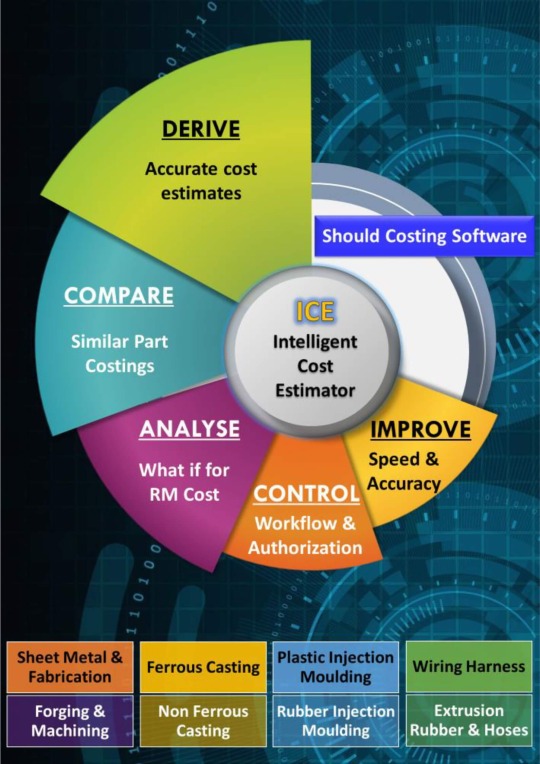
Best Estimating and Costing Software - Cost Masters
Find reliable project cost estimation and optimization with Cost Masters – a trusted provider of estimating and costing software. Streamline your budgeting process with our precise and efficient tools. Eliminate errors and simplify cost management. Learn more about Cost Masters today.
#Estimation and costing software#Cost management tools#Project cost estimation software#Budgeting software solutions#Cost optimization software#Price tracking and analysis tools#Procurement management software#Material cost estimation solutions#Cost calculation software#Project budgeting solutions#Pricing analysis tools#Expense management software#Cost forecasting and planning tools#Profitability analysis software#Resource allocation solutions#Financial planning and analysis software#Cost control and management tools#Spend analysis software
1 note
·
View note
Text
Exploring the Diverse Landscape of BIM Software in Construction: A Comprehensive Guide
Introduction: In the ever-evolving field of construction, Building Information Modeling (BIM) has emerged as a transformative technology that revolutionizes the way buildings are designed, constructed, and managed. BIM software plays a pivotal role in enhancing collaboration, improving efficiency, and minimizing errors throughout the construction process. This article delves into the various…
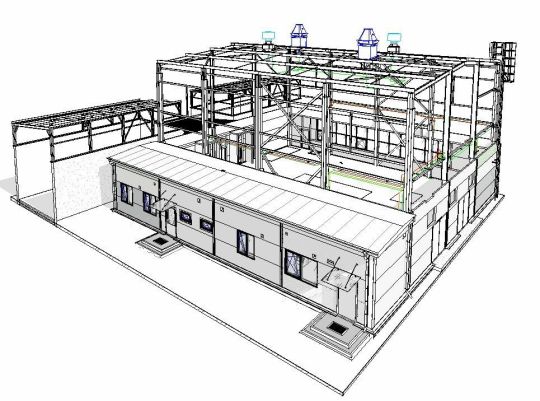
View On WordPress
#architectural design software#as-built documentation#BIM model accuracy#BIM software#Building Information Modeling#collaboration platforms#construction industry advancements#construction management software#construction project efficiency#Construction Technology#cost estimation tools#facility maintenance optimization#facility management solutions#laser scanning technology#LiDAR applications#MEP systems modeling#point cloud integration#project stakeholders collaboration#real-time coordination#structural engineering tools#sustainable building practices
0 notes
Text
Have YOU got an old Windows PC Microsoft has told you can't run Windows 11? It's time to give it a new life!
How to install Windows 11 on unsupported PC Hardware using Rufus. You can also disable some other Windows 11 bullshit like data harvesting and needing a Microsoft account.
It has been in the news a lot lately that Windows 11 isn't allowed to be installed on PCs without certain requirements, including the TPM 2.0, a chip that was only included in PCs made in 2018 or later. This means that once Windows 10 stops receiving security updates, those PCs will not be able to (officially) run a safe, updated version of Windows anymore. This has led to an estimated 240 million PCs bound for the landfill. Thanks Microsoft! I get you don't want to be seen as the insecure one, but creating this much waste can't be the solution.
(I know nerds, Linux is a thing. I love you but we are not having that conversation. If you want to use Linux on an old PC you are already doing it and you don't need to tell me about it. People need Windows for all sorts of reasons that Linux won't cut.)
So lately I have been helping some under privileged teens get set up with PCs. Their school was giving away their old lab computers, and these kids would usually have no chance to afford even a basic computer. They had their hard drives pulled so I have been setting them up with SSDs, but the question was, what to do about the operating system? So I looked into it and I found out there IS actually a way to bypass Microsoft's system requirement and put Windows 11 on PCs as old as 2010.
You will need: Rufus: An open source ISO burning tool.
A Windows 11 ISO: Available from Microsoft.
A USB Flash Drive, at least 16GB.
A working PC to make the ISO, and a PC from 2018 or older you want to install Windows 11 on.
Here is the guide I used, but I will put it in my own words as well.
Download your Windows 11 ISO, and plug in your USB drive. It will be erased, so don't have anything valuable on it. Run Rufus, select your USB drive in the Device window, and select your Windows 11 ISO with the Select button. (There is supposed to be a feature in Rufus to download your ISO but I couldn't get it to work.?
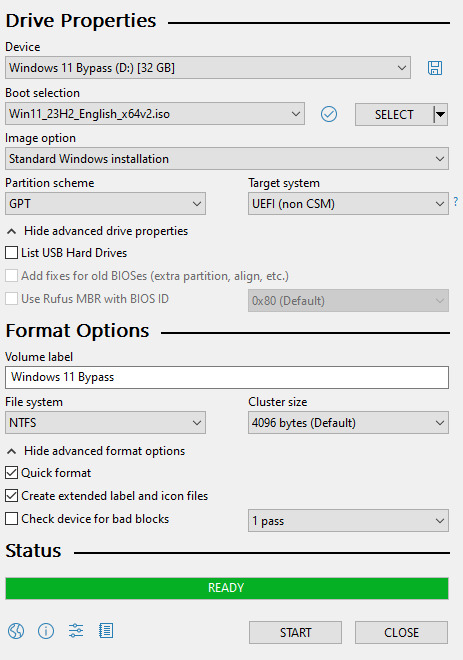
Choose standard windows installation, and follow the screenshot for your settings. Once you are done that, press Start, and then the magic happens. Another window pops up allowing you to remove the system requirements, the need for a microsoft account, and turn off data collecting. Just click the options you want, and press ok to write your iso to a drive.
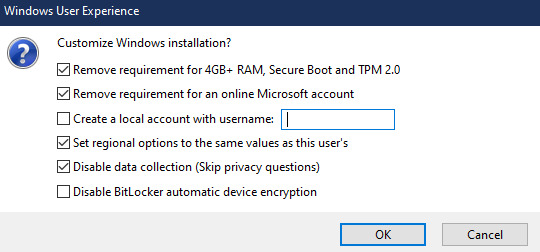
From there you just need to use the USB drive to install windows. I won't go into details here, but here are some resources if you don't know how to do it.
Boot your PC from a USB Drive
Install Windows 11 from USB Drive
If you had a licensed copy of Windows 10, Windows 11 will already be licensed. If you don't, then perhaps you can use some kind of... Activation Scripts for Microsoft software, that will allow you to activate them. Of course I cannot link such tools here. So there you go, now you can save a PC made from before 2018 from the landfill, and maybe give it to a deserving teen in the process. The more we can extend the lives of technology and keep it out of the trash, the better.
Additional note: This removes the requirement for having 4GB Minimum of RAM, but I think that requirement should honestly be higher. Windows 11 will be unusable slow on any system with below 8GB of RAM. 8GB is the minimum I think you should have before trying this but it still really not enough for modern use outside of light web and office work. I wouldn't recommend trying this on anything with 4GB or less. I am honestly shocked they are still selling brand new Windows 11 PCs with 4GB of ram. If you're not sure how much RAM you have, you can find out in the performance tab of Task Manager in Windows, if you click the More Details icon on the bottom right. If you don't have enough, RAM for old systems is super cheap and widely available so it would definitely be worth upgrading if you have a ram starved machine you'd like to give a new life.
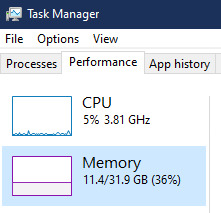
#Windows#Windows 11#tech#tech advice#pc#TPM 2.0#rufus#open source#open source software#technology#tech tips
725 notes
·
View notes
Text
This is your periodical reminder to download your favorite fics from ao3 every once in a while!!
Personally, I got into the habit of doing it once a year, when I'm working on my "Favorite" fic recs.
While I'm at it, here's a few tools I use that help greatly with my Ao3 experience!
Userscripts
Here's a few userscripts that I love for Ao3!
AO3: Kudosed and seen history: Highlight or hide works you kudosed/marked as seen.
This is the userscript that helps me the most when making fic recs. While browsing a tag or my history, I can see which fics I've already kudosed and I can decide to skip/hide individual fics (there's other userscripts out there if you want to permanently hide specific tags).
AO3 Review + Last Chapter Shortcut + Kudos-sortable Bookmarks: Adds shortcuts for last chapter and a floaty review box, sorts bookmarks by kudos.
AO3: Estimated Reading Time: Add an estimated reading time to a fic description in hours and minutes.
Calibre
Calibre is an ebook management software. You can download it here. I really love using Calibre to send fics I've downloaded to my kindle, but there's also a function where you can download all the fics in one Ao3 page, or multiple fics URLS, all at the same time. Just last night, I used it to download all my Buddie bookmarks. Super helpful! It also allows me to add my own covers to fics and use them on my Kindle. I love it!
951 notes
·
View notes
Note
May I ask the software you use to write?
Congratulations on getting so much done!
Thank you so much. And, of course.
I use the Reedsy Book Editor for all of my writing projects, and I've been using it for about three years now. I also have experience with other amazing softwares, and I would love to create more tutorials on them if you need me to.
Here's a quick tutorial on how to use the Reedsy Book Editor.
When you visit the website, the first thing you'll come across is this page. It's a completely free writing tool with a fantastic interface. All you need to do is sign up with your Google or Facebook account.
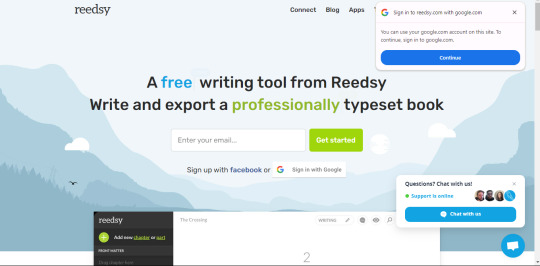
After you've completed the sign-up process and provided some information about yourself, you will be directed to this page. Please locate the "Books" option in the website's header.
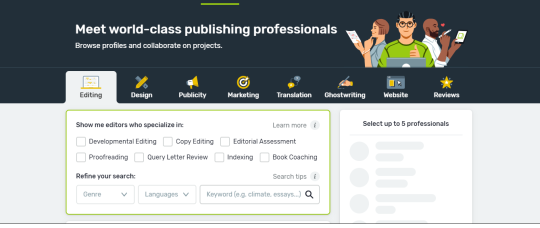
Feel free to give your book/WIP (Work in progress) a title. Remember, it's okay if it's not your final title, as you can always change it in the settings of your book later.

Once you've created it, you can take your time and when you're ready, you can click "Write.”
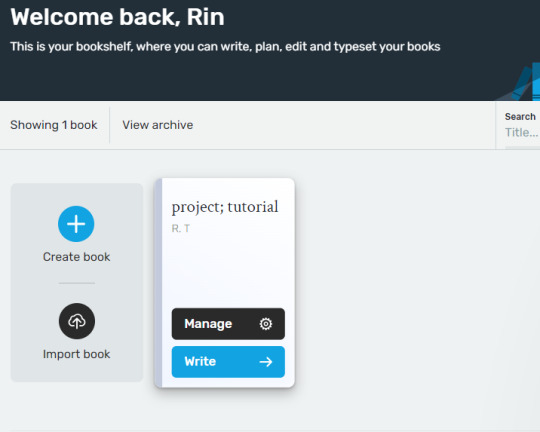
Once you click "Write," you'll be directed to the next page. There, you'll find your chapters, the space to write your manuscript, and a sidebar with various helpful features provided by Reedsy.
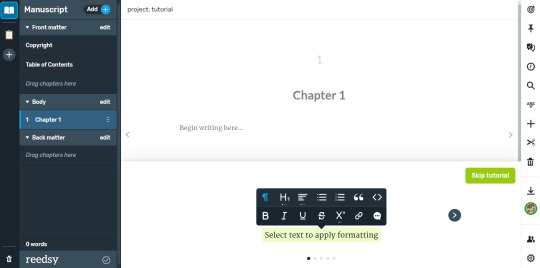
Then, you can choose any name for your chapter that feels meaningful to you.
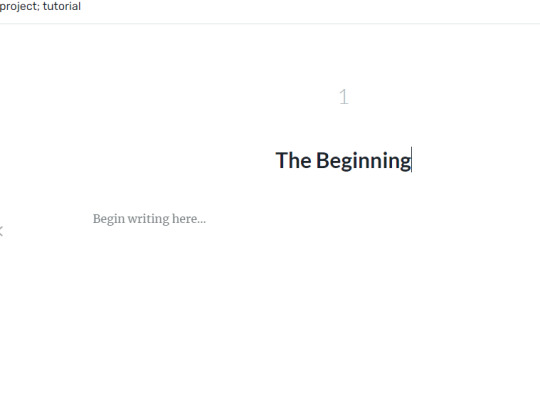
You can also track your writing goals for your specific manuscript or book. This feature provides insights into your writing habits, such as the days you've written and the number of words you've written. You can also set a target word count goal for the manuscript, and you also have the option to set manual writing goals. Additionally, you can check the word count in your current chapter from the bottom of the widget.

You have the option to set a deadline and choose the days that work best for you to write. This will help Reedsy estimate a realistic word count goal for you.
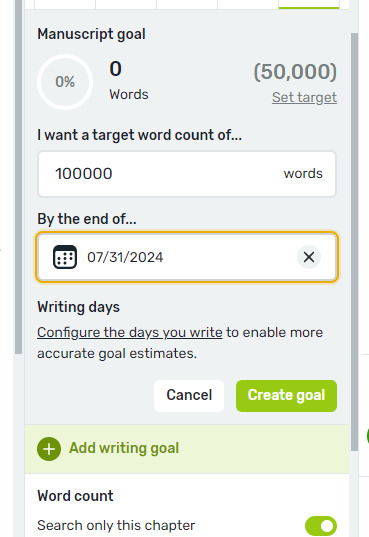
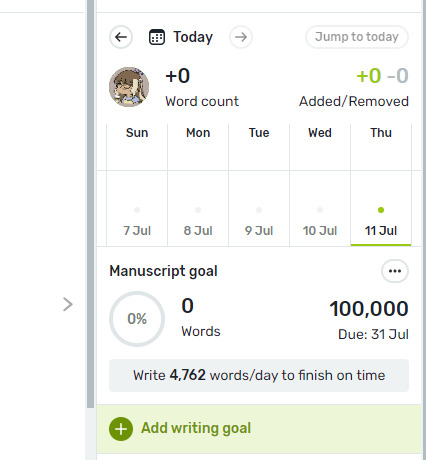
Remember that on Reedsy, there's a new beta feature that allows you to plan and outline your novel without having to leave the website. It offers note cards for you to jot down the plot and scenes from your novel, which can serve as a helpful guide and provide a simple outline to support your writing process.
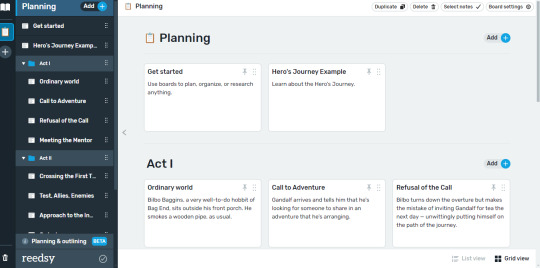
Also, don’t forget the various features available to you when creating your book in Reedsy. For instance, you have the option to include preset formatted pages such as a dedication page and an epigraph that resonates with your story. These features can add a lot of value to your book, and I encourage you to explore them further.
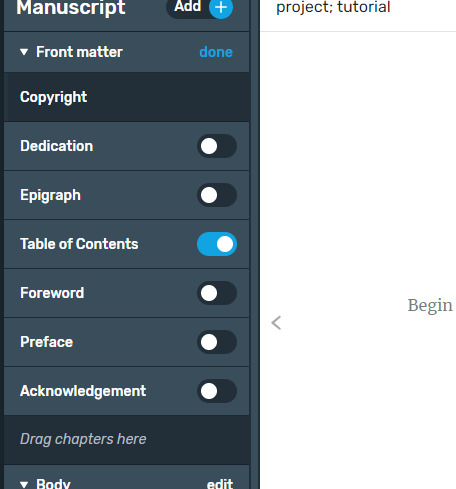
Hopefully this can help you understand the basics of Reedsy Book Editor. One of my favorite writing softwares that is completely FREE!
Hey fellow writers! I'm super excited to share that I've launched a Tumblr community. I'm inviting all of you to join my community. All you have to do is fill out this Google form, and I'll personally send you an invitation to join the Write Right Society on Tumblr! Can't wait to see your posts!

#writeblr#creative writing#thewriteadviceforwriters#writers on tumblr#writer things#writing#writing tips#on writing#writer#writer community#writing tools#writing resources#writing blog#writing advice#fiction writing#novel writing#author#book writing#publishing#indie author#fiction#reedsy#book editor#bookblr#self concept#bookworm#bookstore#books and reading#reading#book quotes
187 notes
·
View notes
Text
Key Factors That Influence the Accuracy of a Cost Estimating Service
Accurate cost estimation is essential for the successful completion of any construction project, as it provides a clear financial framework that guides decision-making. However, achieving accuracy in cost estimation is no easy task. A variety of factors come into play that can influence the precision of a cost estimate. These factors can range from market conditions to the experience of the estimator and even the tools used in the estimation process. In this article, we will explore the key factors that influence the accuracy of a cost estimating service and how these elements contribute to reliable project financials.
1. Quality of Data Used
The foundation of an accurate cost estimate is the quality of the data on which it is based. For cost estimating services to produce reliable estimates, they must use up-to-date, accurate, and comprehensive data. This includes material costs, labor rates, equipment costs, and historical data from similar projects. Outdated or incomplete data can lead to inaccurate estimates, potentially causing cost overruns or missed profit opportunities.
Estimators often rely on databases that contain industry-standard pricing information. However, prices for materials and labor can fluctuate due to market conditions, supply chain disruptions, or inflation. By using the most current data, cost estimating services can ensure that their estimates reflect the true cost of the project, minimizing the risk of budget discrepancies.
2. Estimator Experience and Expertise
The experience and expertise of the cost estimator play a significant role in the accuracy of the estimate. An estimator with years of hands-on experience in the industry will have a deeper understanding of the complexities involved in a project. This knowledge allows them to better assess risks, anticipate potential challenges, and select the most cost-effective materials and labor sources.
An experienced estimator will also be able to apply their expertise to recognize patterns from previous projects, avoiding common pitfalls and ensuring that the estimate is comprehensive. In contrast, a less experienced estimator might overlook critical factors, leading to underestimates or overestimates that can affect the project's budget.
3. Scope of Work and Project Complexity
The complexity and scope of a project have a significant impact on the accuracy of a cost estimate. A large, multifaceted project with many moving parts will be more difficult to estimate accurately than a smaller, simpler project. Projects that involve multiple contractors, subcontractors, and suppliers will require detailed coordination, and failing to account for all variables can result in an inaccurate estimate.
Cost estimating services must ensure that every aspect of the project is considered when generating an estimate. For example, the cost of permits, inspections, and site preparation work must all be factored into the overall budget. Inaccurate scope definition can lead to significant discrepancies in the final cost estimate.
4. Use of Technology and Estimating Software
The use of technology and advanced estimating software can significantly improve the accuracy of cost estimates. Estimating software such as Procore, Buildertrend, or CostX allows for more precise measurements, better data management, and improved collaboration between project stakeholders. These tools often have built-in databases with current material prices and labor costs, which reduces the chances of errors caused by outdated or incomplete data.
Additionally, modern estimating software often includes features like real-time updates, integration with other project management tools, and digital takeoff capabilities. These features streamline the estimating process and help estimators generate more accurate estimates more quickly, improving overall project efficiency.
5. Location and Geographic Considerations
The location of a project is another critical factor that can influence the accuracy of a cost estimate. Construction costs can vary significantly based on geographic factors, including local labor rates, material availability, and transportation costs. For example, building a project in a remote area with limited access to resources may result in higher material and labor costs, as additional logistics may be required to transport goods and workers to the site.
A cost estimating service must consider regional price differences when creating an estimate. Failing to account for location-based cost variations can result in an underestimation of project costs, leading to potential budget issues down the road.
6. Market Conditions and Economic Factors
Economic factors and market conditions also play a key role in influencing the accuracy of cost estimates. Fluctuations in the prices of raw materials, labor, fuel, and equipment can all impact the overall cost of a project. For instance, a sudden rise in the cost of steel or concrete due to supply shortages or increased demand can make a significant difference in a project’s total cost.
Cost estimating services must stay informed about market conditions, including global supply chain issues, trade tariffs, and inflation. This awareness allows them to adjust their estimates accordingly and provide a more accurate prediction of future project costs.
7. Level of Detail in the Estimate
The level of detail included in a cost estimate is a key determinant of its accuracy. A high-level estimate, which only includes broad cost categories, may not provide the level of detail required to capture all potential costs. For example, an estimate that does not break down labor costs by trade or fails to include specific materials may result in significant inaccuracies.
On the other hand, a detailed estimate that accounts for every item required for the project will provide a more accurate picture of the total cost. This includes breaking down costs into smaller categories, such as material quantities, labor rates, equipment usage, and overhead costs. Detailed estimates allow project managers to track expenses more closely and identify areas where cost savings can be made.
8. Timeframe and Project Schedule
The timeframe for completing a project is another critical factor in estimating its costs. Construction projects that are scheduled to be completed in a shorter period may require additional labor or overtime, leading to higher costs. Conversely, projects with longer timelines may result in increased costs due to inflation, changes in labor rates, or the need for extended equipment rentals.
Estimating services must consider the project schedule when providing cost estimates. A well-defined schedule allows estimators to account for potential cost fluctuations based on the time required to complete the project. Inaccurate scheduling estimates can result in underestimating labor and equipment costs, impacting the project’s overall budget.
9. Risk Assessment and Contingency Planning
Risk assessment and contingency planning are essential components of accurate cost estimation. Every project involves a degree of risk, whether related to weather delays, unforeseen site conditions, or changes in regulations. A good cost estimating service will assess potential risks and build contingency allowances into the budget to cover these uncertainties.
By factoring in potential risks and creating a financial buffer, estimators can ensure that projects are prepared for unforeseen challenges without exceeding the budget. Failing to account for risk can lead to cost overruns if unexpected issues arise during the project’s execution.
Conclusion
The accuracy of a cost estimate is influenced by a variety of factors, ranging from the quality of data used to the experience of the estimator and the complexity of the project. By considering factors such as the scope of work, location, market conditions, and technology, cost estimating services can provide more reliable and realistic estimates. With a thorough understanding of these key factors, cost estimators can help ensure that construction projects stay within budget, minimizing the risk of cost overruns and contributing to the overall success and profitability of the project.
#Cost Estimating Service#factors affecting cost estimation#accuracy of cost estimates#project estimating services#cost estimation in construction#impact of location on cost estimates#estimating software tools#market conditions and cost estimation#role of estimator experience in accuracy#contingency planning in cost estimating#construction cost estimation factors#estimating construction costs#risk assessment in estimating#quality of data in cost estimating#project scope and cost estimates#project complexity and estimating#construction estimate accuracy#improving cost estimation accuracy
0 notes
Text
Concrete has allowed the housing and infrastructure booms of the last century that have lifted millions into better, safer living conditions. That task is not over, with an estimated 600–756 million dwellings needed globally to reach the UN 2030 goal of universal housing access, primarily in the global south; this is where 94 per cent of cement is now produced, making it essential to many livelihoods and economies. And, while arguably modern technologies such as scanning equipment, design tools and modelling software make it more possible to use less‑standardised materials than concrete for building at scale, there are functions for which concrete is genuinely hard to replace. Deep piling, long‑span bridges, tall buildings and complex energy infrastructures are all innovations of the concrete age. Since we cannot rely on green concrete at scale, but we also cannot get away from using concrete in some applications, a more nuanced approach must be embraced. The overall use of concrete must be dramatically reduced in favour of a more diverse palette of materials and design strategies. Countries with large existing material stocks must reuse and repair existing buildings, maximising the value of the matter that they already have. Where such places genuinely cannot make do without concrete, recycled cement technologies have a promising role to play. In countries which have a need for mass new building and infrastructure programmes, designers must work with a more varied range of materials as appropriate and affordable to the site and context. This includes bricks, formed from clays or waste material and fired with renewable energy, non‑fired bio‑based materials and stone, reimagining traditional methods of construction and introducing modern innovations that enable their use at scale. Concrete should be reserved for the infrastructure that cannot be done without – data centres to feed ChatGPT hardly count as essential concrete infrastructure.
9 October 2024
51 notes
·
View notes
Note
How did you learn to make a NES game? Like, did you have transferable skills from coding for work or hobbies? Can you give a subjective estimate on how difficult making one is compared to, like, other mediums/platforms you worked with before?
Honestly it was mostly from YouTube tutorials! I’m a software engineer and I’ve taken my fair share of game design classes when I was in college (but that was nearly a decade ago now), so I sorta had the skills I needed.
As for difficulty level, it depends on how you do it. If you do it the old fashioned way it’s extraordinarily difficult. If you use modern tools like NES Maker then it’s a not much more difficult than regular game design. The big limiting factor ends up being the limitations of the hardware.
27 notes
·
View notes
Text
Takeoff Software: Essential Construction Tools for Accurate Estimations
Explore the power of takeoff software in construction, designed to deliver precise material and cost estimates. These tools enhance project accuracy, streamline planning, and improve efficiency, ensuring successful project execution from start to finish for construction professionals.
#takeoff software tools#construction estimating#takeoff in construction estimating#ai construction estimating#construction scheduling
0 notes
Text
Title Software/Real Estate Closing Software
Title Sprint, a premier real estate closing software, streamlines the title and escrow process, enhancing efficiency with its innovative features. Ideal for agencies, it ensures accurate, quick, and compliant transactions, revolutionizing property closings. Read More https://titlesprint.com/
0 notes
Text

An interactive evacuation zone map, touted by the Israeli military as an innovation in humanitarian process, was revealed to rely on a subset of an internal Israeli military intelligence database. The US-based software developer who revealed the careless error has determined -> that the database was in use since at least 2022 and was updated through December of 2023.
On Tuesday, July 9th, we discovered an interactive version of the evacuation map while examining a page on the IDF's Arabic-language website accessible via a QR code -> published on an evacuation order leaflet.
The map is divided into "population blocks" an IDF term to refer to the 620 polygons used to divide Gaza into sectors that a user can zoom into and out of.
However each request to the site pulls not only the polygon -> boundaries but the demographic information assigned to that sector, including which families - and how many. members - live there.
𝐃𝐢𝐬𝐜𝐨𝐯𝐞𝐫𝐲 𝐨𝐟 𝐈𝐧𝐭𝐞𝐫𝐚𝐜𝐭𝐢𝐯𝐞 𝐄𝐯𝐚𝐜𝐮𝐚𝐭𝐢𝐨𝐧 𝐌𝐚𝐩𝐬:
Evacuation maps have played a central role -> in determining which sectors of Gaza were deemed "safe", but repeated instances of Israeli bombing in "safe" sectors has prompted international bodies to state "nowhere in Gaza is safe"
To determine how these sectors have been affected over time, assess the presence of vital -> civilian infrastructure, and gauge the potential impact on the population following the military's evacuation calls to Gaza City residents, the latest of which was two days ago, our team created a map tied to a database using software known as a "geographic information system” -> With the help of volunteer GIS developers, our map of Gaza included individual layers for hospitals, educational facilities, roads, and municipal boundaries.
This endeavor took an unexpected turn earlier this week when we started to work on -> the layer of "evacuation population blocks"
using a map shared to the Israeli military's Arabic site. Unlike static images, these maps responded interactively to zooming and panning. A software developer suggested that dynamic interaction was possible because the coordinates -> of various "population blocks" were delivered to the browser with each request, potentially retrieving the coordinates of the "population blocks" in real time and overlaying them on the map we were building.
The software developer delved into the webpage's source code -> —a practice involving the inspection of code delivered to every visitor's browser by the website. The source code of every website is publicly available and delivered to visitors on every page request. It functions "under the hood" of the website and can be viewed without -> any specialized tools or form of hacking.
𝐏𝐚𝐫𝐬𝐢𝐧𝐠 𝐔𝐧𝐞𝐱𝐩𝐞𝐜𝐭𝐞𝐝 𝐃𝐚𝐭𝐚
Upon examination, the data retrieved by the dynamic evacuation map included much more than just geographical coordinates. The source code contained a table from an unknown GIS -> database with numerous additional fields labelled in Hebrew.
These fields included population estimates for each block, details of the two largest clans in each block (referred to as “CLAN”), rankings based on unknown criteria -> and timestamps indicating when records were last updated.
Some data terms, such as "manpower_e," were ambiguous for us to interpret, possibly referring to either the number of fighters or the necessary personnel to maintain the area -> Using this information we determined that Block 234, Abu Madin was last updated on 27 April 2022. This suggests that Israel's effort to divide Gaza into 620 "population blocks" began one and a half years before the current Israeli offensive -> Additional modification dates indicate that the military updated data in this field regularly throughout October and November, before formally publishing it on the arabic Israeli military webpage on December 1, 2023.
It appears that the IDF has accidentally published -> a subset of their internal intelligence
GIS database in an effort to impress the world with a novel, humanitarian evacuation aid. It is easier to retrieve a database in its entirety than to write a properly selective query. Such mistakes are common among programmers that lack -> experience, security training, or are simply unwilling or unable to do meet standard data security requirements for a project.
𝐂𝐥𝐚𝐧𝐬 𝐚𝐧𝐝 𝐀𝐝𝐦𝐢𝐧𝐢𝐬𝐭𝐫𝐚𝐭𝐢𝐨𝐧 𝐏𝐥𝐚𝐧𝐬 -> In January, Israeli security chiefs proposed a plan for "the day after" where Palestinian clans in the Gaza Strip would temporarily administer the coastal enclave. In this concept, each clan would handle humanitarian aid and resources for their local regions. Israeli assessments of the proposal suggested such a plan would fail due to "lack of will" and retaliation by Hamas against clans willing to collaborate with the army. The plan has since been modified to include Hamas-free “bubbles,” (as reported by the Financial Times) -> where local Palestinians would gradually take over aid distribution responsibilities.
As this plan is to be initially implemented in Beit Hanoun and Beit Lahia. Al-Atatrah Area and Beit Hanoun, we have analyzed the information in the database assigned to those three areas -> Israeli army classified the Al-Atatrah area as region 1741, although there are only 620 'blocks' on the map. The registered population was listed as 949, last updated by the IDF on October 9th. We assume this represents an estimate by the IDF of current residents as of Oct 9th. Residents of Al-Atatrah were among the first to evacuate following the initial bombardment on October 7th and 8th and were not given a formal notification to evacuate. The Israeli military noted that the Abo Halima family comprised 54% of the block’s population -> In area west of the town Beit Hanoun, Israel had desginated the Almasri clan as the largest in the sector, consisting 18% of the block's population. Second largest was the Hamad family, with11% of the block's population. This area were also associated with rankings, however -> without the criteria used to determine the ranking, these numbers are difficult to interpret.
𝐖𝐡𝐚𝐭 𝐝𝐨𝐞𝐬 𝐭𝐡𝐢𝐬 𝐢𝐧𝐟𝐨𝐫𝐦𝐚𝐭𝐢𝐨𝐧 𝐫𝐞𝐯𝐞𝐚𝐥?
Although some of the data were inadvertently truncated during publication, posing challenges for comprehensive -> interpretation, this database provides a valuable window into the Israeli military's perspective on Gaza.
For one, it prompts questions into why the military had already partitioned Gaza into 620 population blocks a year an a half before October 7th -> This suggests an early inclination to implement a governance policy where clans would assume authoritative roles, as well as detailed population surveillance. Tracking dense populations in the chaos of urban warfare is a difficult task -> It may be that the QR code on the evacuation map actively collects the locations of people who scan it, allowing the IDF to collect real-time data on Palestinians in Gaza as they attempt to find safety.
END
85 notes
·
View notes
Text
A Programming Hook
Object-Oriented Programming's strength is Modularity; and just about everything coded today follows the OOP design. Except Python and JavaScript--sometimes.
So I've coined a term "Hook"; not to be confused with a fishing-line-hook, or the literary tool where you write the most interesting part of your whole story into the first sentence.
A [Hook] in this regard is a [Space for Something]{to go} like a nook or a closet. You don't know *what* might go into that nook or closet; you just know there are *things* with which are properly displayed or stored in a Nook or in a Closet.
And this is the same concept.
There's a *whole* lot of features that we'd might *wish* to add to a coding project, yet time and funding constraints, oftentimes, makes it hard to include every feature one might want.
In this vein; we add space for the features we might want to add *after* we finish all the important bits.
This is very important in [Software Engineering], because there will be a time in a project where you make it to an important feature that you cannot implement *without* having had re-written the *whole* thing.
And so, you want options available when that inevitably comes to pass.
Now. I developed this whole making [Training Simulations] in the [Air Force] and when I tell you; one day somebody asked me to do something that may have added several weeks to the development time.
They asked "How long will this take to [fix]?" To which I responded; "I'm not sure. I think I remember adding some hooks that would make this easy, and it could be done tonight. But as it wasn't a requirement *at the time* this may take 2-4 weeks to implement if I have to rework it from scratch."
To which, they were very upset with my best time "4 hours, or the end of shift, whichever comes first" or "several weeks, because that would put us behind schedule."
"I'll get back to you at the end of day Chief!"
Non-developers, Maintenance Professionals like myself *actually* who're used to every little thing being documented and not *created on the fly* were rather upset with those timelines.
And I had already been reprimanded several times based on my timeline predictions.
Which uh. Were accurate. They just weren't particularly accurate *for me* whom'st {is/was} a very well educated developer... In a sea of maintainers who have not studied the code as I have done.
My timelines were usually off at this stage *because* I was getting my understanding of how the coders (who were also rather green) and the (maintainers become coders) would be able to understand the timelines.
I have to make clear; I was, in-fact, doing *my* job to the best of my ability, and even better than *your{my supervisor's}* ability despite them being very concerned about my time estimates being [too long].
Communication isn't bad on my side... Even when I appear to be bad at communicating.
One of these days I will not be so defensive! Yet the Anti-Trans sentiment remains, so will the SALT!
Anyway; these particular [Hooks] were contextual triggers. Things that would/should be called at certain times during certain steps in the simulation.
Custom CallBack functions mostly.
And these particular callbacks were rather complex for a simple one-function call event.
Luckily for my OCD brain; I had stopped to asked the question about this exact feature they wanted to add *now* that they had been worried about adding earlier, until the customer made it a [Need to have].
I had asked the question, at that time; "What happens if *this* particular feature *becomes* a Necessary addition."
Because my [awesome predictive abilities] were spot on about what they need that particular simulation to accomplish.
Luckily I had been stumbling through various frameworks and implementations of the Squadrons Honorable Historical Developments. (Part of the job was updating and modernizing old Adobe Flash 2.0 projects) And had stumbled across a few implementations of these features *both* before it was necessary *and* after it seems to have taken a week to tack on at the end.
And that's when I started adding the concept of "Hooks" to my personal development checklist. Everytime you ask yourself; "How might this feature be used outside this implementation" or "What happens if I need to add something *somewhere* that might break Modularity" is an opportunity to add in hooks.
"Can I go back, and reuse this feature to make my job easier in the future?"
Or you know; Object-Oriented Design (And Modularity) in a nutshell.
19 notes
·
View notes